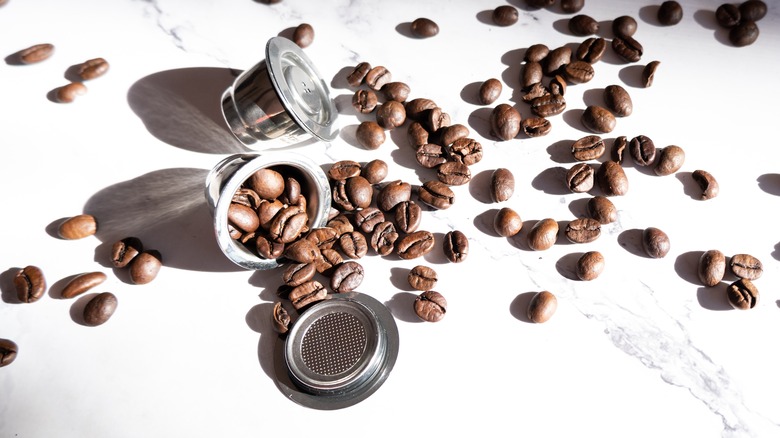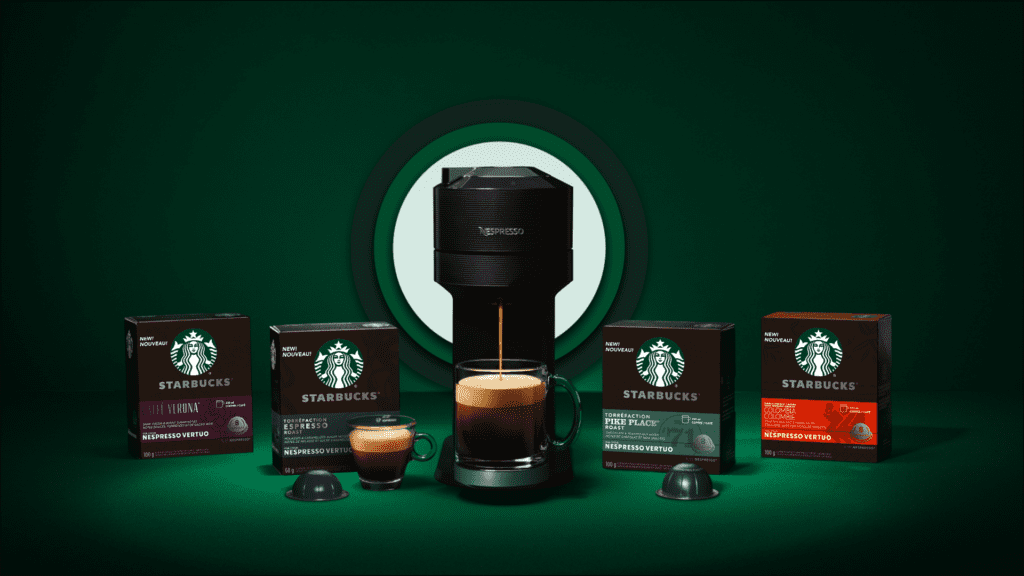In the intricate world of espresso, brew ratios are the secret sauce that can make or break your perfect shot. Whether you’re a novice barista or a seasoned coffee enthusiast, understanding and mastering brew ratios is essential to unlocking the full potential of your espresso machine and coffee beans.
Brew ratios dictate the strength, flavor, and balance of your espresso. It’s a simple concept with profound effects: the ratio of coffee grounds to water used in brewing. For instance, a 1:2 ratio means one part coffee yields two parts espresso. This delicate balance determines whether your shot is rich and bold or light and nuanced.
In this guide, we will delve deep into the nuances of espresso brew ratios, exploring their impact on flavor, how to dial in your perfect shot, and the tools and techniques needed to achieve consistent results. From the concentrated ristretto to the milder lungo, we’ll cover the spectrum of brew ratios and provide practical tips for perfecting your espresso at home.
Get ready to elevate your coffee game and enjoy every sip of your meticulously crafted espresso. Let’s dive in!

What is an Espresso Brew Ratio?
An espresso brew ratio is the proportion of coffee grounds to the amount of espresso extracted. It’s crucial for determining the strength, flavor, and balance of your espresso shot. Typically, it’s expressed as a ratio like 1:2, meaning 1 gram of coffee yields 2 grams of espresso.
Common Brew Ratios
- Ristretto (1:1 to 1:1.5): Produces a highly concentrated shot with intense flavors.
- Normale (1:1.5 to 1:2.5): The classic espresso, balancing sweetness, acidity, and bitterness.
- Lungo (1:2.5 to 1:3): A longer shot, yielding a milder, more diluted espresso.
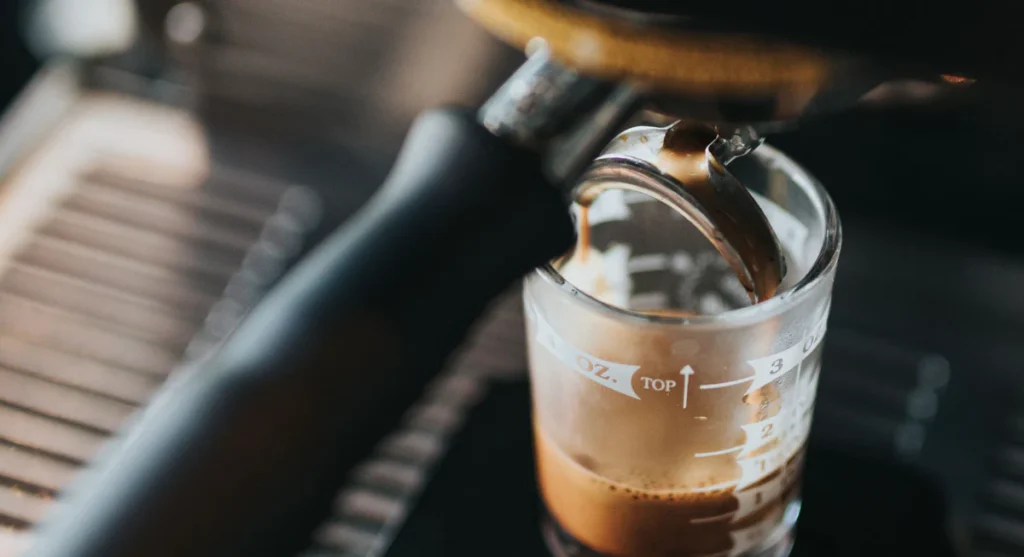
Importance of Brew Ratios
Brew ratios significantly impact the flavor balance of espresso; too much water can lead to over-extraction and bitterness, while too little can cause under-extraction and sourness. The Specialty Coffee Association suggests a golden ratio of 1:2 to 1:2.5 for consistently delicious espresso, ensuring a harmonious extraction of flavors.
- Flavor Balance: Over-extraction with too much water results in bitterness, while under-extraction with too little water causes sourness and weak flavor.
- Golden Ratio: The recommended 1:2 to 1:2.5 ratio ensures a well-rounded, flavorful espresso shot.
- Consistency: Precise brew ratios allow for reproducibility, giving you the same great shot every time.
- Extraction Control: Brew ratios help fine-tune the strength and intensity of espresso, balancing the dissolved solids for optimal flavor.
- Personal Preference: Adjusting brew ratios lets you customize your espresso to your taste, whether you prefer a strong or mild shot.
- Educational Aspect: Learning and mastering brew ratios enhance your understanding of coffee brewing, encouraging experimentation and deeper appreciation.
Step-by-Step Instructions to Espresso Brew Ratio
Mastering espresso brew ratios involves understanding the precise measurement and preparation of coffee grounds, the yield, grind size, and the consistency of puck preparation. Here’s a step-by-step guide to achieving the perfect espresso shot.
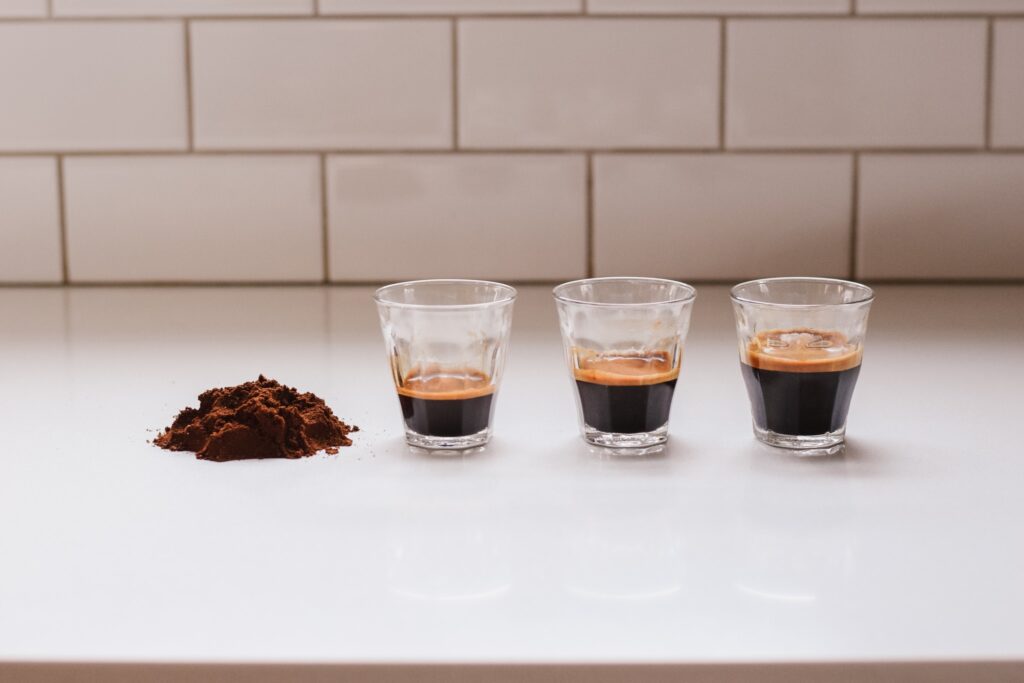
Tools and Techniques
Using the right tools can make a significant difference:
- Digital Scale: Ensures precise measurements for consistency.
- Grinder: A quality grinder allows for fine adjustments in grind size, which is critical for dialing in your espresso.
- Tamping: Proper tamping technique ensures an even coffee bed, reducing the risk of channeling and uneven extraction.
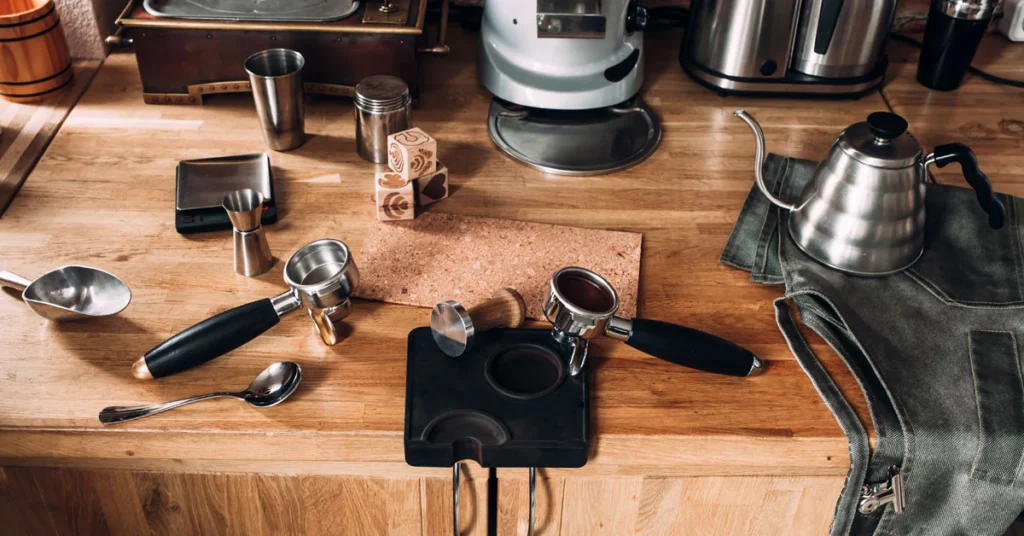
Practical Steps for Perfecting Brew Ratios
- Weigh Your Coffee: Start by weighing 18-20 grams of coffee for a double shot using a digital scale.
- Distribute Evenly: Pour the grounds into the portafilter and gently tap it to distribute evenly.
- Tamp Properly: Tamp the grounds with consistent pressure to create a level coffee bed.
- Set Your Yield: Place your cup and scale under the spout and start the extraction. Aim for a yield of 36 grams for a 1:2 ratio.
- Adjust as Needed: If the extraction time is too short or too long, adjust the grind size accordingly. Fine-tune until you achieve an extraction time of 25-30 seconds.
- Consistency and Calibration: Regularly check your equipment and calibration to maintain consistency. Keep your grinder clean and calibrated for precise adjustments.
Measure Your Coffee
- Use a Digital Scale: Accuracy is crucial for a consistent shot. For a double shot of espresso, measure out 18-20 grams of coffee. This ensures that you have a precise amount of coffee to work with every time, eliminating guesswork.
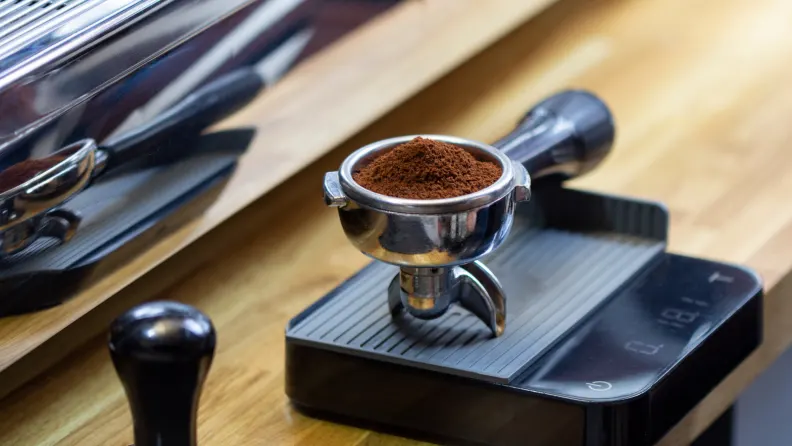
Set Your Yield
- Determine Your Desired Ratio: Aim for a yield that matches your brew ratio. For a 1:2 ratio, if you start with 18 grams of coffee, you should aim to extract 36 grams of espresso. This balance will give you a well-rounded flavor profile.
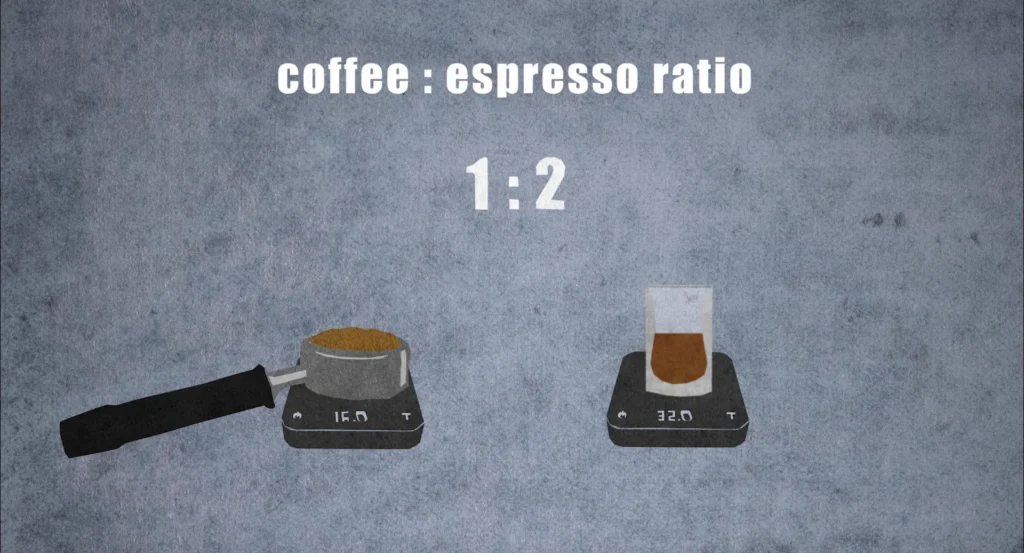
Adjust Grind Size
- Fine-Tune Your Grind: The grind size affects extraction time. Finer grinds slow down the extraction, leading to a longer brewing time, while coarser grinds speed it up. Aim for an extraction time between 25-30 seconds. If your shot pulls too quickly, adjust to a finer grind. If it pulls too slowly, adjust to a coarser grind.
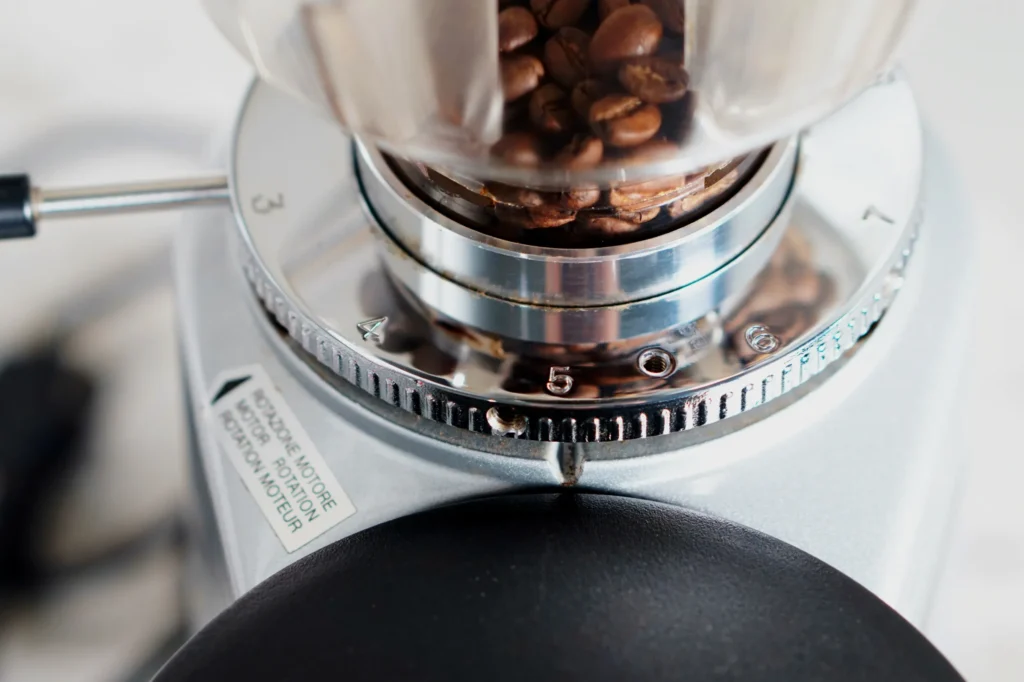
Consistency is Key
Prepare the Puck Consistently: Ensure your puck preparation is consistent. Distribute the coffee evenly in the portafilter and tamp with about 30 pounds of pressure. This helps to prevent channeling, where water finds the path of least resistance through the puck, leading to uneven extraction.
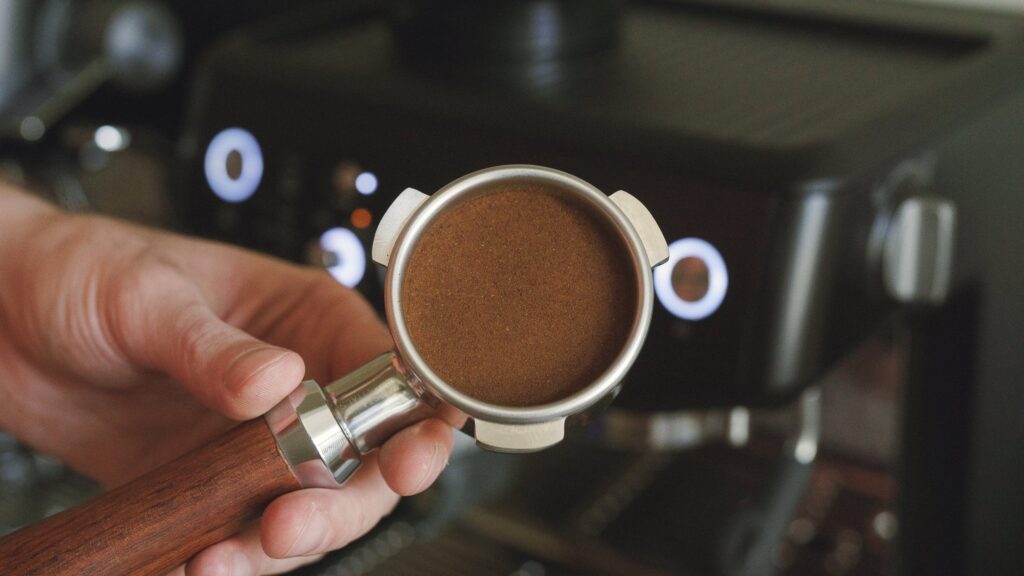
Troubleshooting Common Issues
- Inconsistent Shots:
- Cause: Often due to uneven distribution or improper tamping.
- Solution: Ensure your puck preparation is consistent. Distribute the coffee grounds evenly in the portafilter and tamp with consistent pressure to create a uniform coffee bed.
- Bitter Espresso:
- Cause: Likely from over-extraction.
- Solution: Try using a coarser grind to slow the extraction process, or reduce the extraction time. This will help balance the flavors and reduce bitterness.
- Sour Espresso:
- Cause: Usually from under-extraction.
- Solution: Use a finer grind to increase the extraction time, or increase the overall extraction time. This helps ensure that the coffee grounds are fully extracted, bringing out the richer flavors and reducing sourness.
Conclusion
Mastering espresso brew ratios is an art that requires practice and patience. Start with the standard 1:2 ratio and adjust based on your taste preferences. Keep experimenting with grind size, dose, and extraction time until you find your perfect shot. Remember, consistency is key, and using the right tools and techniques will help you achieve a delicious espresso every time.
Happy brewing! If you have any questions or need more tips, feel free to drop a comment below!
Disclosure: Our blog contains affiliate links to products. We may receive a commission for purchases made through these links. However, this does not impact our reviews and comparisons. We try our best to keep things fair and balanced, in order to help you make the best choice for you.


